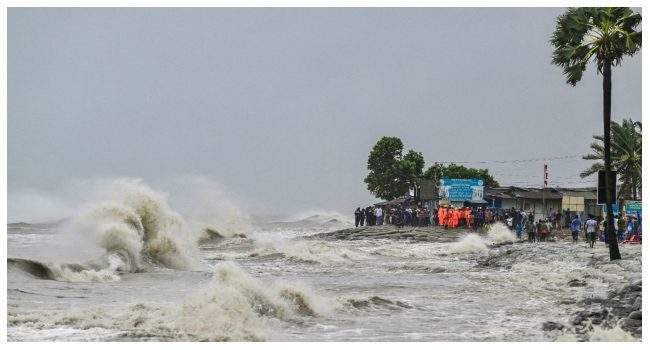Dhaka, Bangladesh—Fierce gales and crashing waves battered the low-lying coasts of Bangladesh and India on Monday as Cyclone Remal began to weaken after making landfall Sunday night. The storm has claimed two lives and caused significant destruction, according to officials.
Kamrul Hasan, secretary of Bangladesh’s disaster management ministry, reported the fatalities to AFP. Communication disruptions were noted, with wind speeds reaching 111 kilometres (69 miles) per hour, as stated by Muhammad Abul Kalam Mallik, a senior weather forecaster at the Bangladesh Meteorological Department.
“The severe cyclone will continue to pound Bangladesh coast until 10:00 am (0400 GMT),” Mallik told AFP. “After more rains, the severe cyclone will weaken and turn into a storm.”
In recent decades, cyclones have killed hundreds of thousands in Bangladesh. However, the frequency of superstorms hitting the densely populated coast has increased, attributed to climate change.
An AFP reporter in the affected region observed relentless heavy rain and extreme winds since Sunday evening, damaging tall buildings, uprooting trees, and tearing off tin roofs from homes.
Approximately one million people in Bangladesh and neighbouring India sought refuge, moving inland to concrete storm shelters. Most of Bangladesh’s coastal areas are only one to two meters above sea level, making them highly susceptible to storm surges.
Authorities raised the danger signal to its highest level. Hasan mentioned that while there were no immediate damage reports, several embankments were breached or submerged, flooding some coastal regions.
In India’s West Bengal, the cyclone caused extensive damage, blowing off roofs of hundreds of houses and uprooting thousands of mangrove trees and electricity poles, senior state government minister Bankim Chandra Hazra told AFP. Large parts of the affected areas were without electricity.
“Storm surges and rising sea levels have breached a number of embankments,” Hazra added. “Some island villages are flooded.”
Over 800,000 Bangladeshis and more than 150,000 people in India evacuated from coastal villages and the Sundarbans mangrove forest, according to government ministers and disaster officials.
Mallik noted that the Sundarbans’ vast mangrove forests helped dissipate the storm’s worst impacts. “Like in the past, the Sundarbans acted as a natural shield to the cyclone,” he said.
While scientists assert that climate change is intensifying storms, improved forecasting and effective evacuation planning have significantly reduced the death toll.
